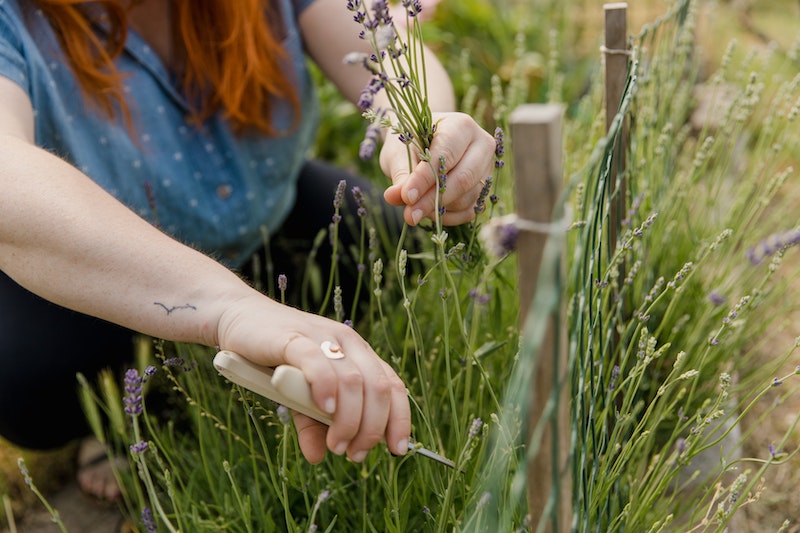Maintenance for most perennials requires not only proper watering and fertilizing techniques but also some specific types of pruning. Pinching, shearing, and deadheading are the techniques that will help keep perennials blooming and in good shape through the growing season. Read on to learn more about when and how each technique should be used.

When to Prune Perennial Plants
While deadheading of spent flowers can be done through the growing season, shearing and pinching out of branches should be done only at specific points in the plant's growth. Shearing is done for a second flush of flowers or to revive a heat-stressed or overgrown plant in mid-summer. Pinching will be needed early in the season as the first flower buds are forming or earlier to keep plants branching densely.
Deadheading is the best way to keep plants from forming unwanted seeds. Some perennials are notoriously aggressive self-seeders and can be easily controlled by deadheading the spent flowers. Conversely, early season perennials that are allowed to set seed will start dying back for an early dormancy. Shearing plants before seeding is also an excellent option to control seeding.

Why Prune Perennial Plants
Regular pruning maintenance may encourage a longer blooming season from most perennials. Shearing the whole plant back by half will help plants that prefer the cool seasons of spring and fall take a break from the heat of summer and return lush and robust as the weather cools. Cutting back all the top growth in preparation for winter is good garden hygiene if pests and diseases are a problem. Any affected foliage left to decompose over winter increases the likelihood of reinfection the following season.
How to Prune Perennial Plants
Step 1 - Pinching back of early stems and flower buds
Pinching back early stems helps to keep most plants compact with denser foliage and more flower buds. Pinching out the first flower buds will result in larger flowers forming. Nip out (with fingers or small garden ships) a set of leaves or flower buds from the stem tips just above another set of leaves.
Step 2 - Deadheading of spent flowers
Deadheading encourages the plant to direct more energy into producing flowers instead of seeds. Snip off the spent flower as far back into the foliage as possible to hide any bare stems.
Step 3 - Shearing back of the whole plant
Shearing is a type of rejuvenation pruning that involves cutting back the whole plant (foliage and flowers) by one-third or a half. This allows the plant to regrow fresh foliage and often results in a second (or even third) flush of blooms later than is typical for the plant. Shearing back herbaceous perennials in the fall for winter prep involves cutting the whole plant back to within 6 inches of the soil as the plant starts to die naturally.
Perennial Plant Pruning Tips
- Pinch out new growth early to restrict overall size
- Deadhead regularly to prevent self-seeding and encourage more flowering
- Shear back plants to rejuvenate tired growth in mid-summer
- Shear back herbaceous plants in the fall to prepare for winter dormancy only after they have begun to die back naturally
 |
Author Robbin Small - Published 1-12-2022 |
